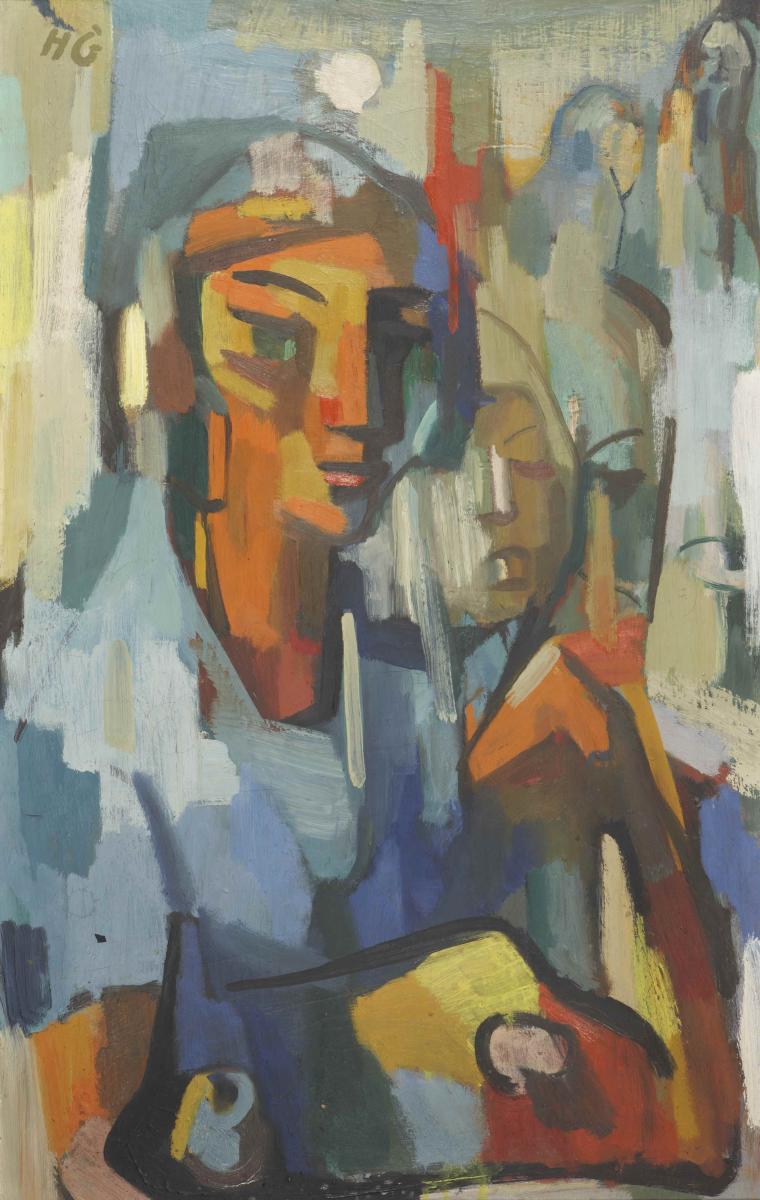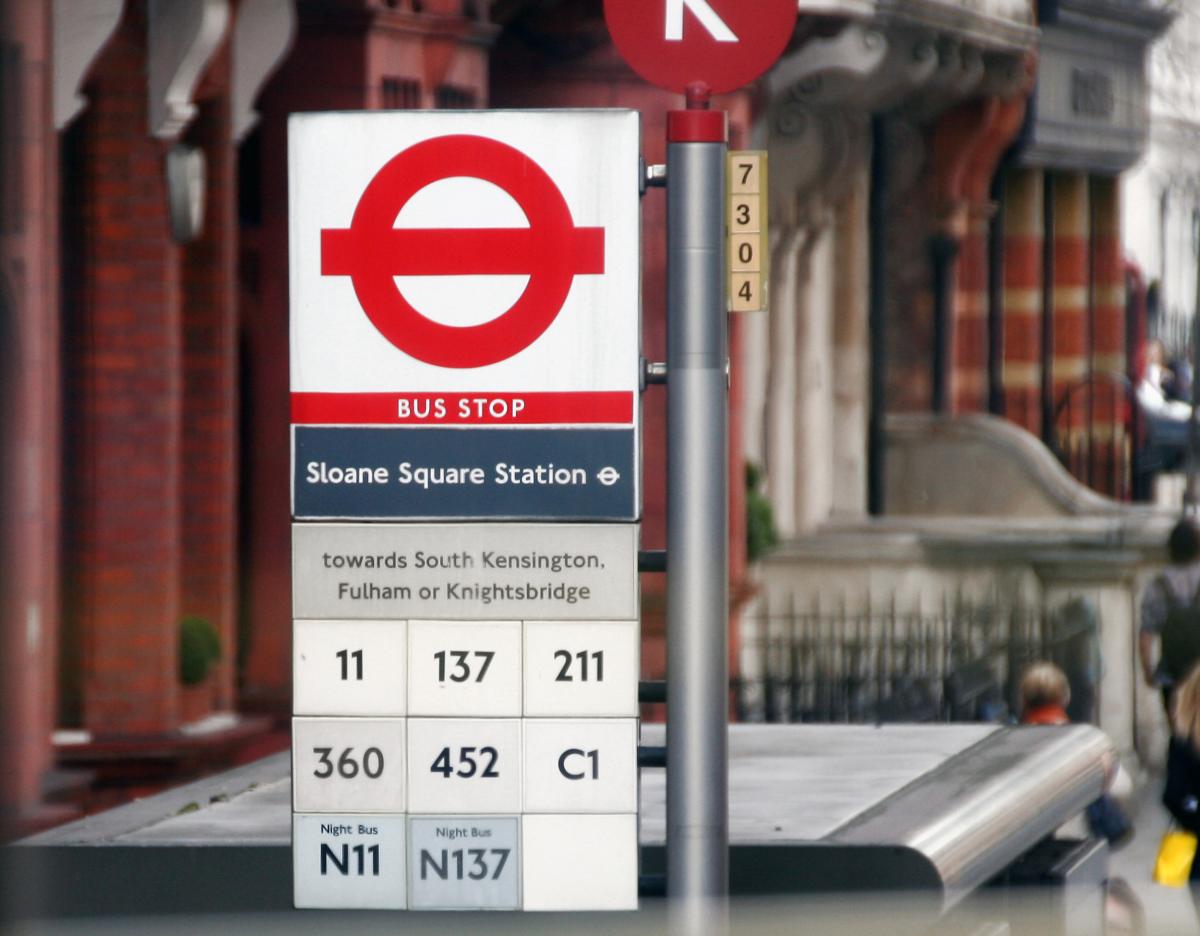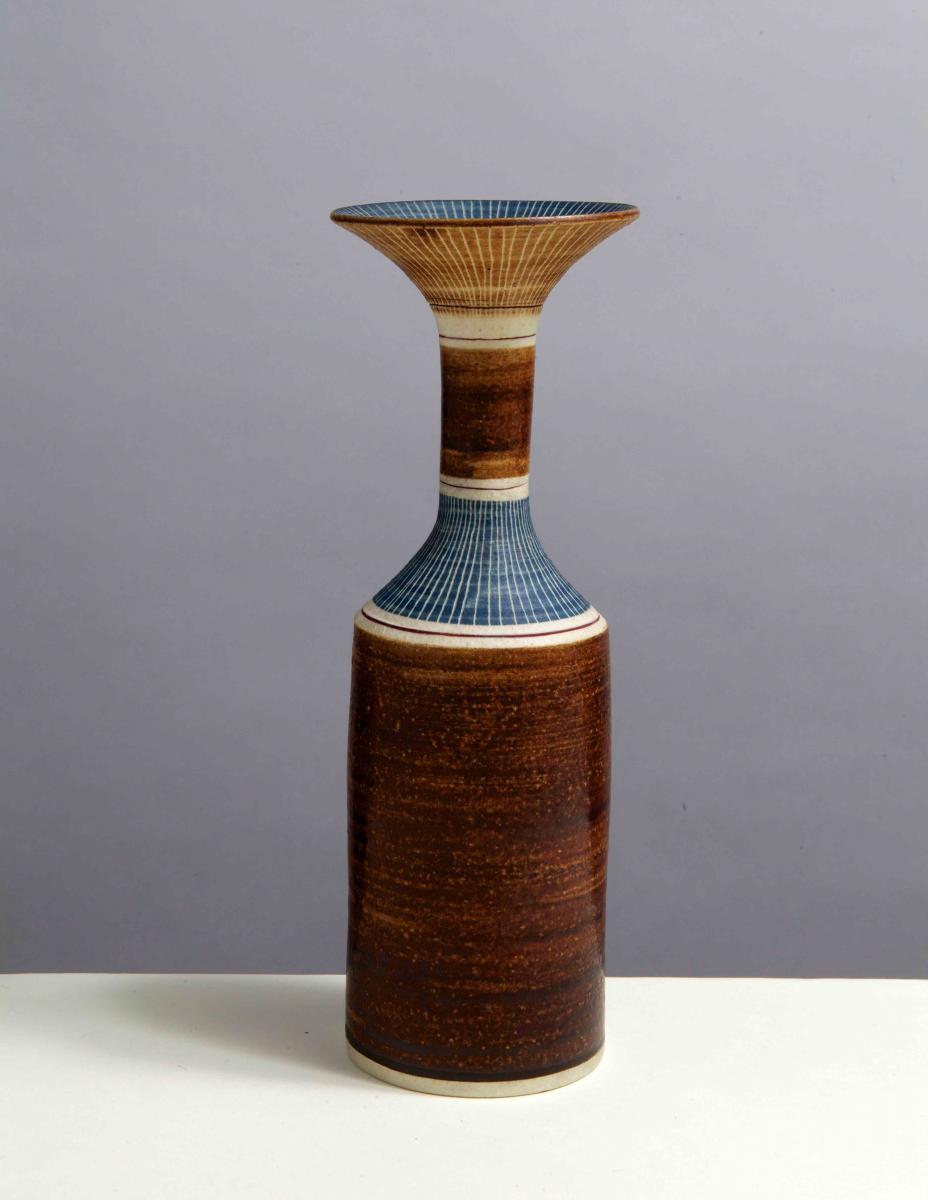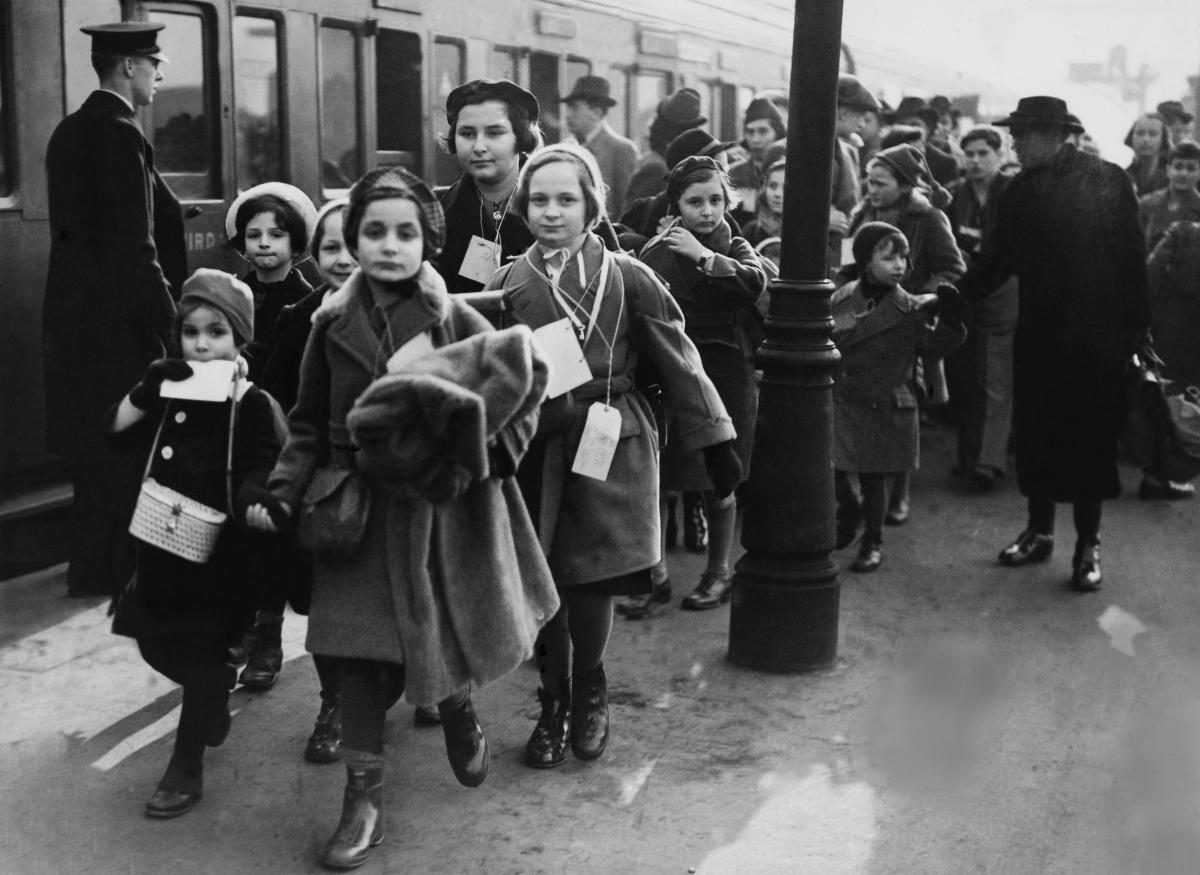This wonderful Cornish workshop and museum is dedicated to the legacy of studio pottery trailblazer Bernard Leach
Art and Exile: Celebrating Refugee Heritage
Art and Exile: Celebrating Refugee Heritage
16 Apr 2019
 Hilde Goldschmidt, Self Portrait, 1952 © Lakeland Arts Trust
Hilde Goldschmidt, Self Portrait, 1952 © Lakeland Arts Trust
To commemorate the 80th anniversary of the outbreak of World War II the year-long nationwide Insiders/ Outsiders Festival celebrates the people who, after fleeing the Nazis, made an indelible contribution to Britain’s culture. Arts Society Lecturer Monica Bohm-Duchen introduces some of them.
HANS SCHLEGER
 Shutterstock
Shutterstock
Few will be aware that this recognisable marker of London life, the London Transport bus-stop sign, was designed in 1935 by German-Jewish Hans Schleger (1898–1976), who came to Britain in 1932, having already worked in Berlin and New York; he wisely decided not to return to his country of birth. He worked as a poster designer during World War II, and later established himself (alongside other émigrés such as FHKHenrion and Holocaust survivors Germano Facetti and Romek Marber) as one of Britain’s most respected graphic designers.
KURT SCHWITTERS
German-born Dadaist Kurt Schwitters (1887–1948) came to England (via Norway) in 1940 – whereupon he was interned on the Isle of Man (like thousands of other refugees from Nazism) as an ‘enemy alien’ by the British government. During his lifetime, his almost anti-art, mixed-media constructions, which incorporated the detritus of everyday life, were known and appreciated here by only a select few. In the late 1950s, however, this form of populist art seemed newly relevant. Pop artist Richard Hamilton instigated a seven-year campaign to rescue the main wall of Schwitters’ Merzbarn from a dilapidated building in the Lake District (where Schwitters ended his days in obscurity) and install it at the Hatton Art Gallery, University of Newcastle, where it can be seen today.
LUCIE RIE
 Centre of Ceramic Art York, Porcelain bottle, 1958-59, by Lucie Rie, photo by Phil Sayer
Centre of Ceramic Art York, Porcelain bottle, 1958-59, by Lucie Rie, photo by Phil Sayer
The work of Austrian-born potter Dame Lucie Rie (1902–95) is known for its finesse. After she emigrated to the UK in 1938, she needed to earn her living and so began producing ceramic buttons for the fashion industry. This less familiar aspect of her output is currently on show at York Art Gallery. In 1946, she hired fellow émigré Hans Coper as her assistant; this was the beginning of a fruitful professional partnership that lasted for many years. In 2016, one of Rie’s bowls from the late 1970s broke records by selling at auction for over £130,000 – a sum previously unheard of for British studio pottery.
LUCIAN FREUD AND FRANK AUERBACH
Now widely acknowledged as two of the most important British painters of the second half of the 20th century, both Freud and Auerbach came to England from Germany as children in the late 1930s. Freud (1922–2011) came with most of his (famous) close family intact; whereas Auerbach (b. 1931) came on a Kindertransport and never saw his parents again. The brand of angst-ridden Expressionism represented by artists such as Meidner and Kokoschka seemed thoroughly alien to the British art world in the 1930s; but artists like Freud and Auerbach have since done much to make a milder form of Expressionism acceptable.
RUDOLF VON LABAN
Dancer, choreographer and movement theoretician Rudolf von Laban (1879–1958), born in Austro-Hungary, did a great deal to raise the profile of modern dance as a serious art form and to transform the nature of dance scholarship. He established choreology, the discipline of dance analysis, and invented a system of dance notation, now generally known as Labanotation. He was also the first person to revolutionise dance education and to develop the concept of community dance. His most celebrated collaborators included Kurt Jooss and Sigurd Leeder, both of whom, like Laban, came to this country in the 1930s and were welcomed here by Dorothy and Leonard Elmhirst at Dartington Hall in Devon. His legacy lives on in the form of the Trinity Laban Conservatoire and the Laban Guild.

Arts Society Lecturer Monica Bohm-Duchen is the initiator and creative director of the Insiders/Outsiders Festival. Two of her lectures this year are The Immigrant Experience in Modern British Art and Insiders/Outsiders: Refugees from Nazi Europe and their Contribution to British Visual Culture. Other Arts Society Lecturers who specialise on related subjects include Daniel Snowman and Lydia Bauman.
VISIT
Insiders/Outsiders Festival: for events nationwide see insidersoutsidersfestival.org
READ
Insiders Outsiders: Refugees from Nazi Europe and their contribution to British visual culture, edited by Monica Bohm-Duchen, published by lundhumphries.com
SEE
Between Worlds at Glyndebourne Archive Gallery, Glyndebourne, open to ticket holders for the Glyndebourne Festival from 18 May–25 August; glyndebourne.com
Refuge: The Art of Belonging at the Abbot Hall Art Gallery, Kendal, until 29 June; abbothall.org.uk (this show will feature work by Kurt Schwitters).
Lucie Rie: Ceramics and Buttons, Centre of Ceramic Art at York Art Gallery, York, until 12 May; yorkartgallery.org.uk
About the Author
THE ARTS SOCIETY
JOIN OUR MAILING LIST
Become an instant expert!
Find out more about the arts by becoming a Supporter of The Arts Society.
For just £20 a year you will receive invitations to exclusive member events and courses, special offers and concessions, our regular newsletter and our beautiful arts magazine, full of news, views, events and artist profiles.
FIND YOUR NEAREST SOCIETY
MORE FEATURES
Ever wanted to write a crime novel? As Britain’s annual crime writing festival opens, we uncover some top leads
It’s just 10 days until the Summer Olympic Games open in Paris. To mark the moment, Simon Inglis reveals how art and design play a key part in this, the world’s most spectacular multi-sport competition



